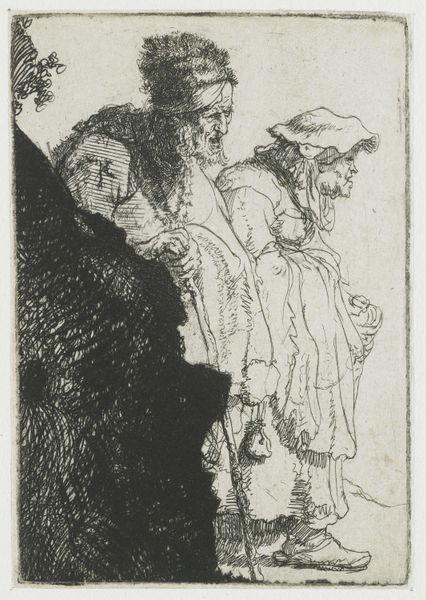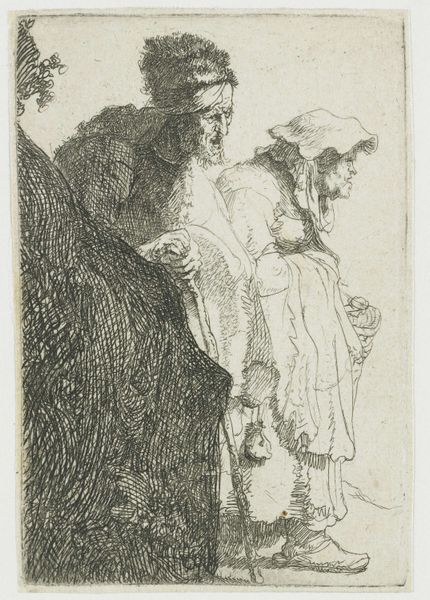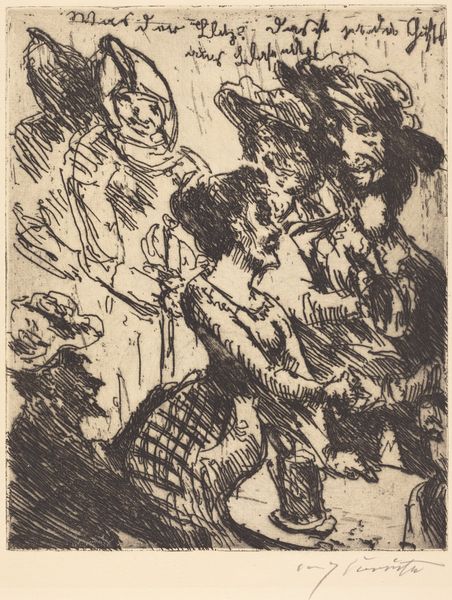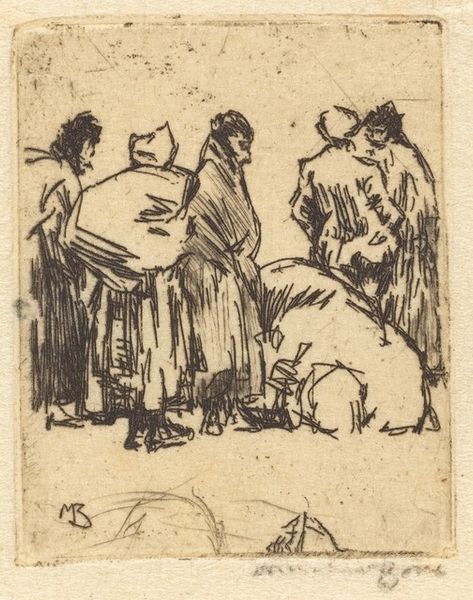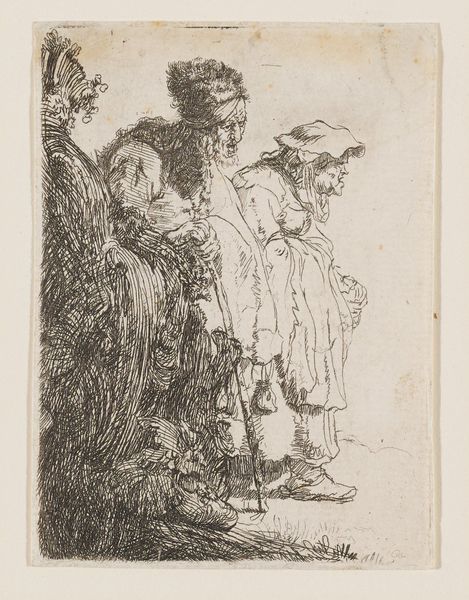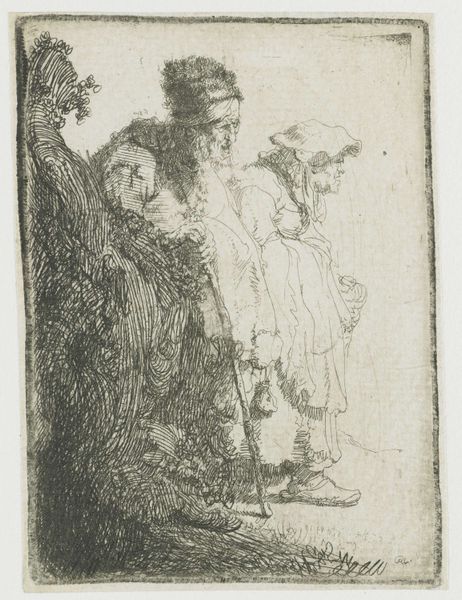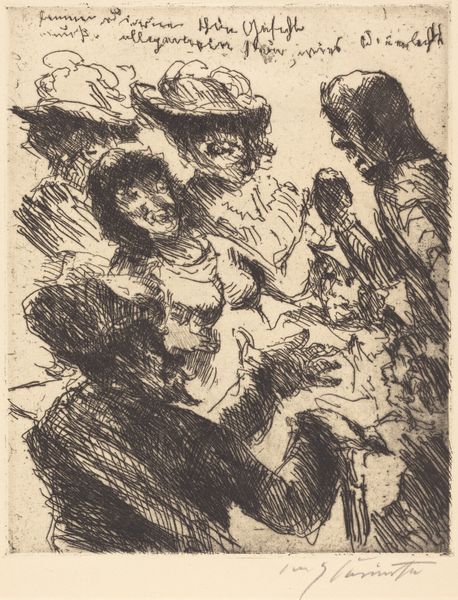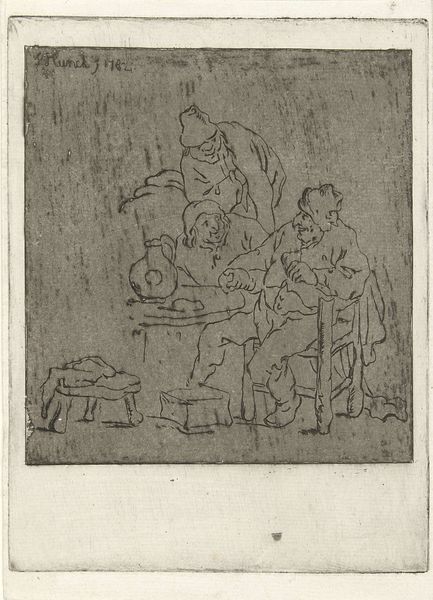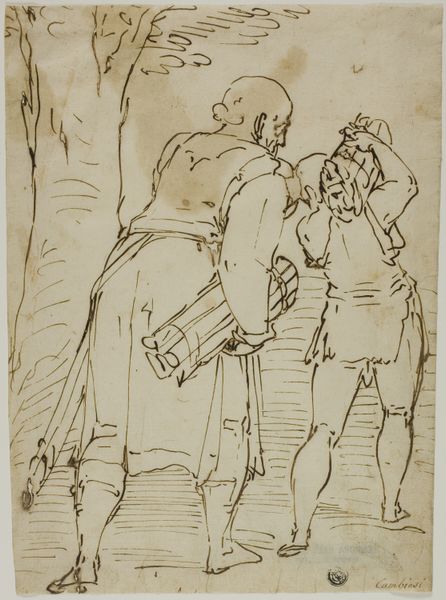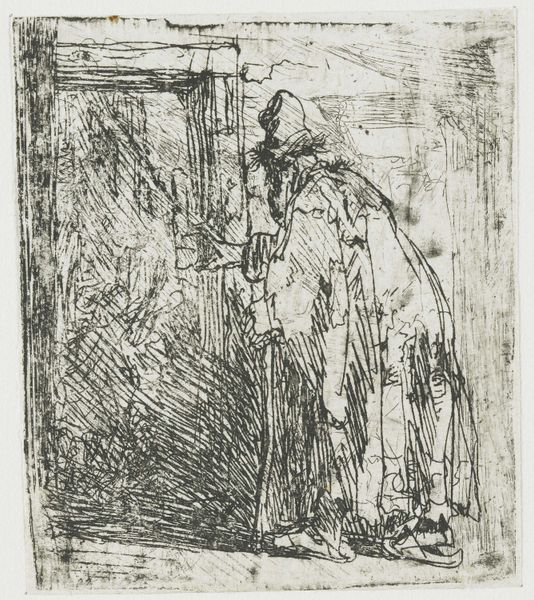
drawing, etching, ink
#
portrait
#
drawing
#
baroque
#
dutch-golden-age
#
pen sketch
#
etching
#
figuration
#
ink
#
genre-painting
Dimensions: height 97 mm, width 67 mm
Copyright: Rijks Museum: Open Domain
Curator: This pen and ink drawing, made around 1630, is titled "Beggar man and woman behind a bank" by Rembrandt van Rijn. Editor: Oh, it's heavy, isn't it? Such deep blacks and cramped lines. Makes you feel a bit closed in. Curator: Absolutely. Rembrandt uses a dense, almost frantic, network of lines. This piece strikes me as almost expressionistic for its time, you know, raw and visceral. Editor: There's a remarkable depth to the figures, despite it just being ink on paper. How do you think he creates such tangible, weathered faces with such limited means? Curator: He was a master observer, wasn't he? Look how each line contributes—a quick flick becomes a wrinkle, a shaded patch forms bone structure. It’s economical yet profoundly effective. There's no sugarcoating the reality of their lives. Editor: They seem to lean into one another, or maybe into this undefined bank that hides their legs. Does the title of the work somehow direct that interpretation of what is around and sheltering them? Curator: "Behind" has spatial implications, yes. I'm glad he uses it; otherwise, we wouldn't necessarily recognize its prominence in composition, since we only have that heavily crosshatched void beside them. Without the title, we might focus solely on their individual conditions. The setting provides context. Editor: What's striking, in a slightly melancholic way, is their resignation. No theatrical gestures, no begging, just an inward focus. I wonder about the story he’s hinting at, or perhaps inviting us to invent? Curator: It is interesting, that you say "invent" their story, since I believe they are taken straight from the streets of Amsterdam! These might just be portraits or figure studies rendered with compassion rather than social commentary. That said, given Rembrandt's later success and patronage, maybe there is a commentary here! Editor: Good point! I now recognize their likenesses have something to do with it! I appreciate Rembrandt not just for his technique, but for the emotional resonance. There is so much conveyed with so few lines. Curator: I quite agree. Even without overt emotional cues, these figures offer insight into the human condition in seventeenth-century Amsterdam. Editor: It's quite potent. It encourages a kind of quiet contemplation about resilience, about what we can't see.
Comments
No comments
Be the first to comment and join the conversation on the ultimate creative platform.
